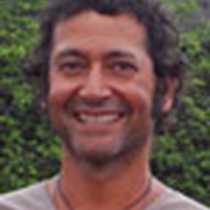Genovesa Island
We woke up very far from yesterday’s island: we had entered the caldera of Genovesa Island this morning. This deep hole in the island collapsed many years ago, leaving behind a trail of death and desolation. Alone in the northern part of the archipelago, and far away from everything, this island has nothing but birds and sea animals. Our aim for the morning hike was to see the nesting colonies of magnificent and great frigate birds, swallow-tailed gulls, Nazca boobies and red-footed boobies.
Some of us went to the steep cliff of Principe Philip’s steps, others to the shallow beach of the bay. Prince Philip’s steps – 90 feet above sea level – were named after the prince who visited the island in the seventies and helped with the conservation of the Galápagos. We saw thousands of storm petrels trying to rest on the uninviting rocks. They are the prey of the short-eared owl. We found this bird near the nesting site of the petrels.
The coral sand beach at Darwin Bay has red mangroves, where red-footed boobies nest. Many juveniles were seen around the ship, waiting for a ride. Snorkeling was a good complement to all these activities. It was just the perfect way to spend our last day in Galápagos!




